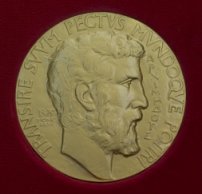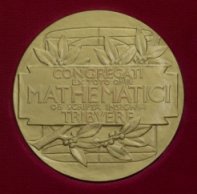|
| Fields Medal |
|

|
 Contact
Contact
|
Fields Medal
The Fields Medal is awarded every four years on the occasion of the International Congress of Mathematicians to recognize outstanding mathematical achievement for existing work and for the promise of future achievement. The Fields Medal Committee is chosen by the Executive Committee of the International Mathematical Union and is normally chaired by the IMU President. It is asked to choose at least two, with a strong preference for four, Fields Medallists, and to have regard in its choice to representing a diversity of mathematical fields. A candidate's 40th birthday must not occur before January 1st of the year of the Congress at which the Fields Medals are awarded. The name of the Chair of the Committee is made public, but the names of other members of the Committee remain anonymous until the award of the prize at the Congress. If a former student (Ph.D. thesis only) of a Committee member is seriously considered, such a member shall not continue to serve on the Committee for its final decision. History of the Fields MedalAt the 1924 International Congress of Mathematicians in Toronto, a resolution was adopted that at each ICM, two gold medals should be awarded to recognize outstanding mathematical achievement. Professor J. C. Fields, a Canadian mathematician who was Secretary of the 1924 Congress, later donated funds establishing the medals, which were named in his honor. In 1966 it was agreed that, in light of the great expansion of mathematical research, up to four medals could be awarded at each Congress. To obtain further details on the Fields Medal or on J. C. Fields, please refer to:
The following text by Eberhard Knobloch describes the design of the medal. The Fields MedalObverse:
The head represents Archimedes facing right.
The inscriptions mean: Reverse:The inscription on the tablet reads: CONGREGATI In the background there is a representation of Archimedes' sphere being inscribed in a cylinder.
[Prizewinners] [Prize Page] [Nomination Guidelines] [IMU Homepage] |
| last update: 2007-06-15 | © IMU | http://www.mathunion.org |



 in Greek capitals and
in Greek capitals and